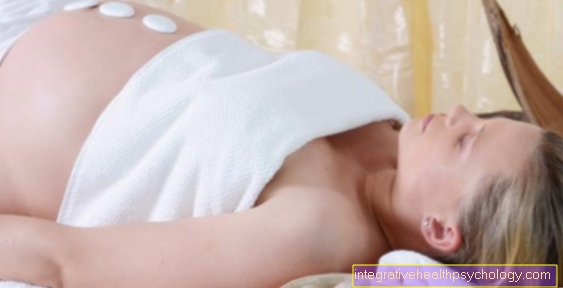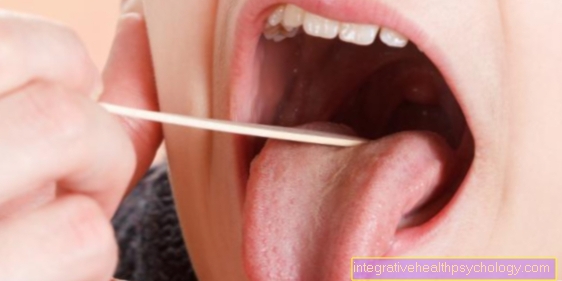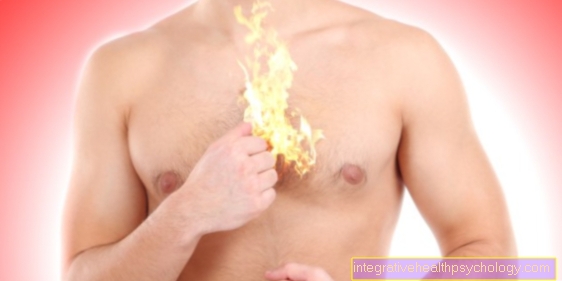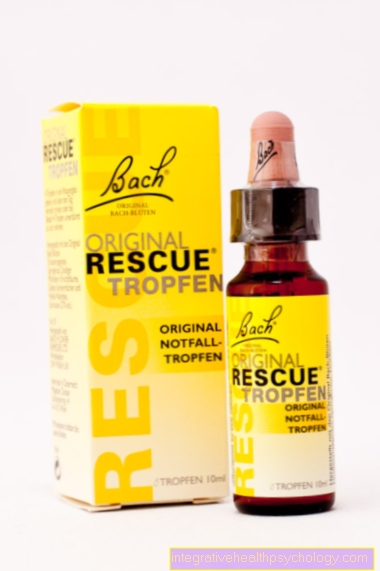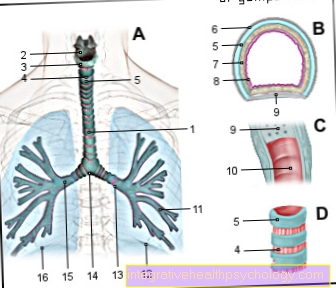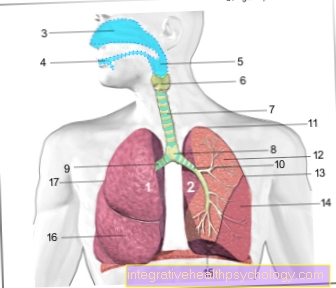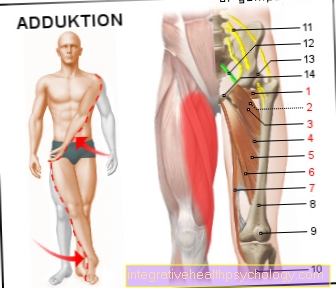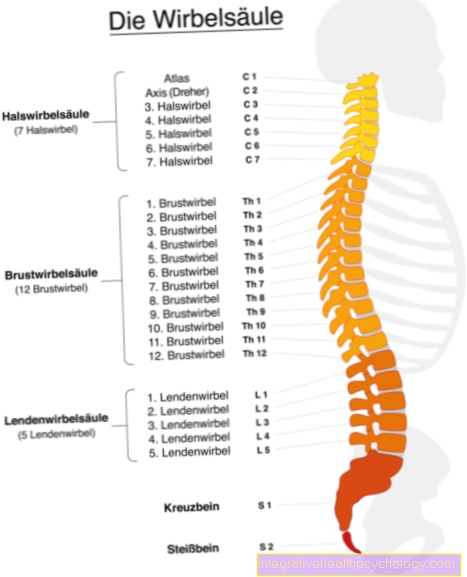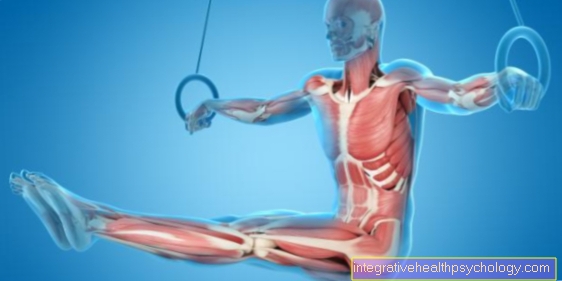Shoulder muscle training

The shoulder muscles
The shoulder joint is one of the most flexible joints in the human body and is mainly stabilized by muscles. Of the Deltoid is one of the larger muscles and is contracted in all dimensions when the arm moves. It is thus divided into a front, side and rear part.
Most of the upper extremity training exercises also train the shoulder muscles. In many setback sports (tennis etc.) shoulder injuries are common.
In the lowest point of the bench press, high loads also act on it Shoulder joint. Athletes with complaints in the shoulder area should therefore avoid training with heavy weights.
Figure shoulder muscles

Shoulder muscles
- Scapula-hyoid bone muscle -
Omohyoideus muscle - Anterior stair muscle -
Scanelus anterior muscle - Head turner -
Sternocleidomastoid muscle - Collarbone - Clavicle
- Deltoid - M. deltoideus
- Raven bill process upper arm muscle -
Coracobrachialis muscle - Subscapular muscle -
Subscapularis muscle
(second layer) - Two-headed upper arm muscle
(Biceps) - M. biceps brachii - Pectoralis major -
Pectoralis major muscle - Scapula lifter -
(second layer) -
Muscle levator scapulae - Upper bone muscle -
Muscle supraspinatus (second layer) - Scapula bone -
Spina scapulae - Small round muscle -
Muscle teres minor - Subbone Muscle -
Muscle infraspinatus - Large round muscle -
Muscle teres major - Trapezius -
Muscle trapezius - Broad back muscle -
Muscle latissimus dorsi
Rotator cuff
= 4 muscles (7th + 11th + 13th + 14th) -
covered by the deltoid
You can find an overview of all Dr-Gumpert images at: medical illustrations
Definition of muscle building
This form of strength training is about targeted muscle building with various objectives.
The reasons may be purely aesthetic, but at the same time therapeutic effects can be used that can be achieved through improved muscles. Chronic complaints can be completely eliminated by building muscle. In muscle building training, targeted stimuli must be applied to the muscles
For more detailed information on this topic, see Building Muscle.
description
Since the shoulder muscles are secondarily stressed in numerous exercises, isolated shoulder muscle training is not mandatory in the area of health and fitness.
Most male studio visitors hope to build muscle in the front part of the deltoid muscle. Targeted exercises that primarily train the shoulder muscles are the neck press and the lateral raise.
Training the shoulder muscles not only prevents tension in this area, but also shoulder neck pain.
Exercises

Neck press
The neck press is a training exercise for targeted loading of the front shoulder muscles. When executing the movement, however, make sure that the load on the shoulder movement is particularly high at the lowest point.
For more detailed information on this exercise, visit our topic Neck press
Lateral raise
At the Lateral raise the athlete stands in a step position with a slight forward lean of the upper body. The upper arms are close to the upper body in the starting position. Forearms and upper arms form a right angle throughout the movement. The upper arms are raised until they are parallel to the floor.
For more detailed information on this exercise, visit our topic Lateral raise
Further information
Further information for individual muscle groups with different forms of exercise can be found here
- Arm muscle training
- Abs workout
- Leg muscle training
- Chest muscle training
- Back training
- Weight training back
- Shoulder muscle training
- Neck muscle training
- Weight training without equipment
Back to overview Weight training

